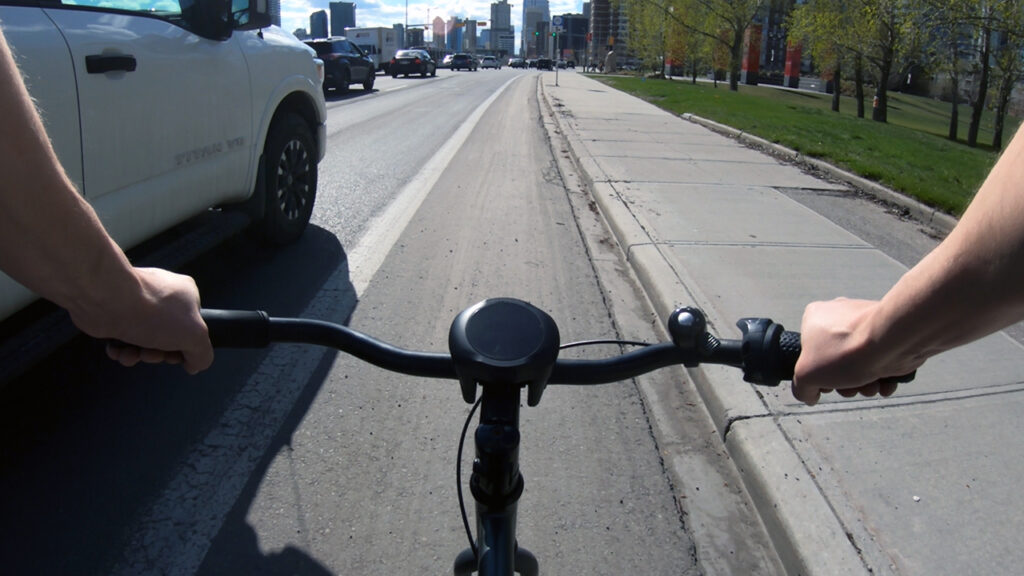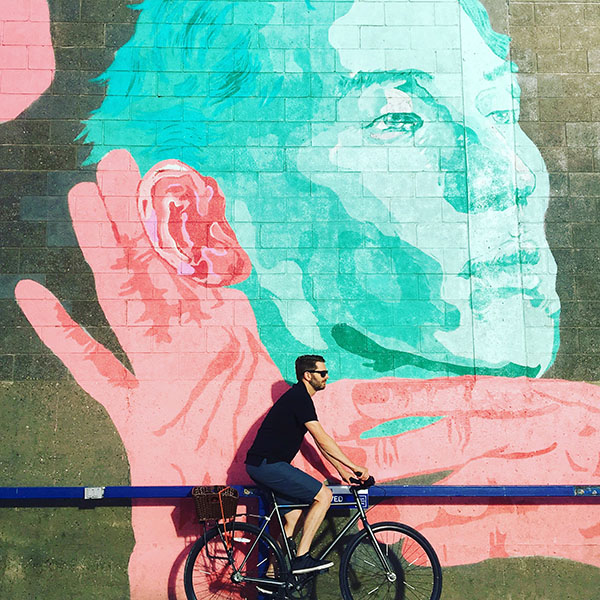Two thing caught my eye recently and led to the question: do painted bike lanes suck? In fact, the question might go even farther: is a painted bike lane more dangerous than nothing at all?
You know what I’m talking about. It’s those bike lanes that are created just with a strip of paint and nothing else. No protection or separation from passing motors vehicles as all. Just a strip of paint.
The first came when I saw a talk recently by Dr. Jennifer Dill from Portland State University, who has done a ton of research into urban cycling. And one of the things she did recently was to survey people’s impressions of different types of bike infrastructure.
One of those question was to ask people if the presence of a different types of bike infrastructure made them more likely to ride a bike in a city. She asked about things like painted bike lanes, bike paths or protected bike lanes. And among the lowest results was painted hike lanes. People didn’t like them. They just don’t feel safe in them.

Which is interesting. Bike lanes are explicitly designed to accommodate cyclists, but most people perceive them as unsafe.
But maybe that’s just perception. Are they actually unsafe?
A different new study looked at this question. It looked at passing distance. Basically, the researchers hooked up a device to cyclists that measures the distance of passing vehicles. They sent those cyclists riding on different types of roads to see if drivers gave the cyclist more space when there was a bike lane.
What do you think happened? Yep, researchers found that motorists passed cyclists closest in two situations: Around parked cars, and in painted bike lanes.
I found this bizarre. Not only did people perceive painted bike lanes as among the most unsafe types of bike infrastructure, they are probably right.
So I did a little experiment and recorded one day of my bike commute. I then examined the video to see if this research bears out. Guess what? On just one day of commuting, I found that research is probably correct. The closest calls with cars came around parked cars and in painted bike lanes.
Which leads to a natural question: If painted bike lanes suck so bad, why do we build them? My theory? Because they are easy. Even though they do nothing to help cyclists, they are cheap, easy to implement and make cities feel like they are helping.
But it’s time to move on. Let’s drop the painted bike lanes in favour of infrastructure that actually works. Separate bikes from cars and people will ride bikes. It’s simple. Now, we just have to do it.
Please subscribe to my YouTube channel.
Follow Tom Babin on Twitter, Facebook, Instagram or Medium.
You can also follow Shifter on Facebook or Medium.
Tom Babin is the author of Frostbike: The Joy, Pain and Numbness of Winter Cycling.


